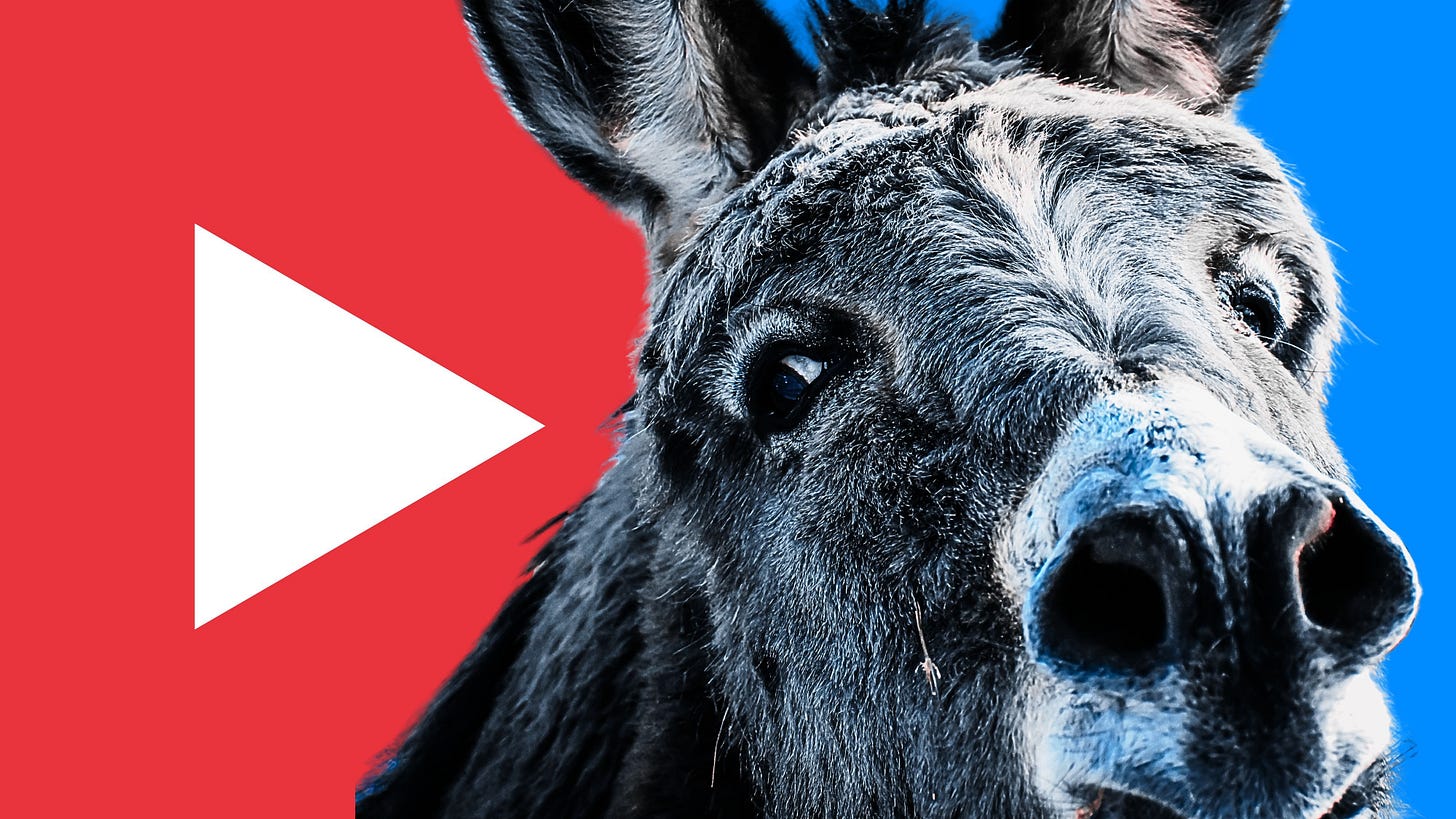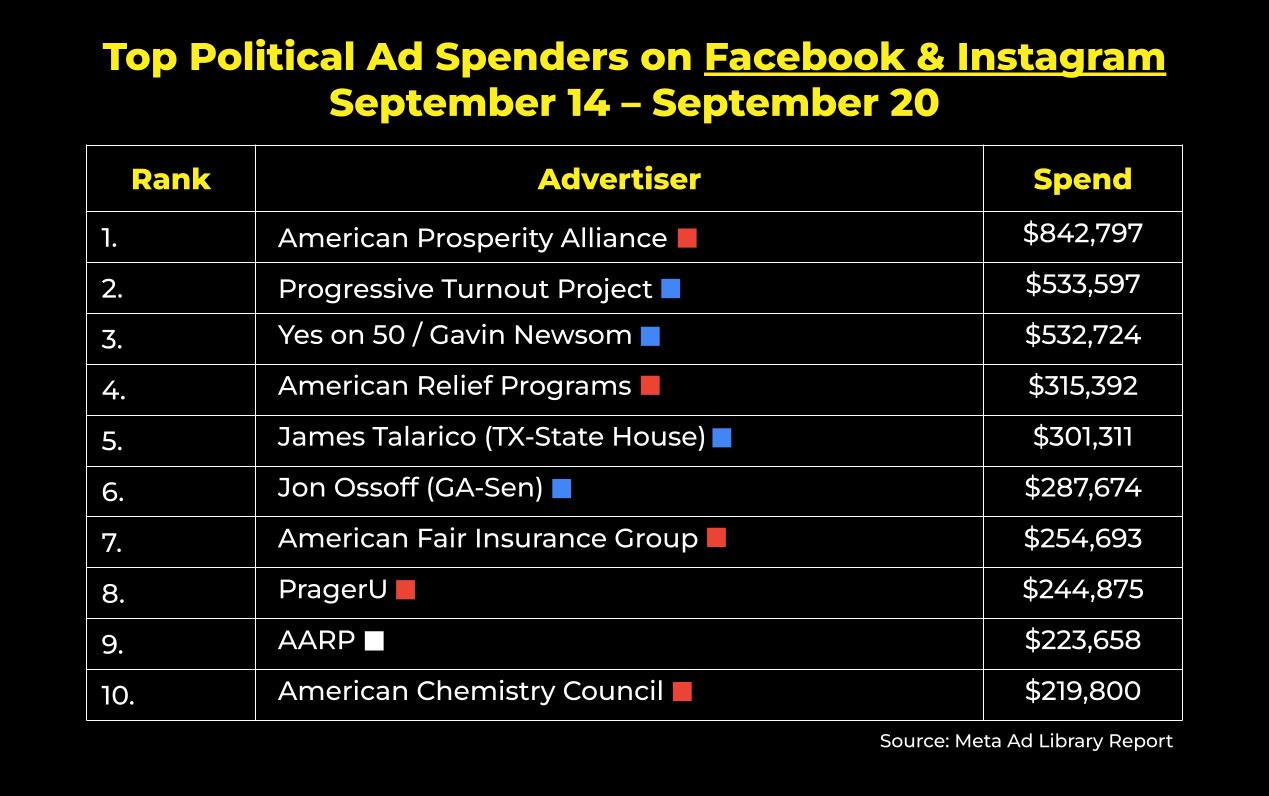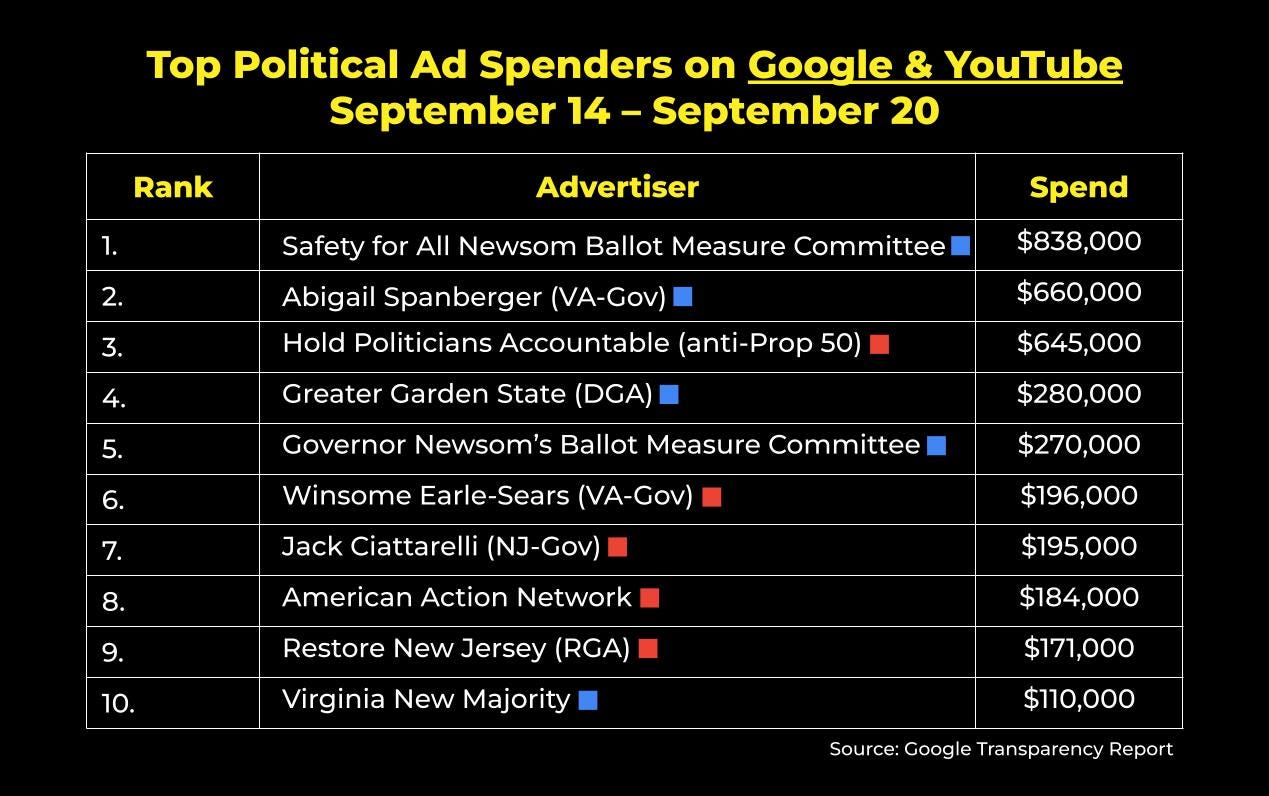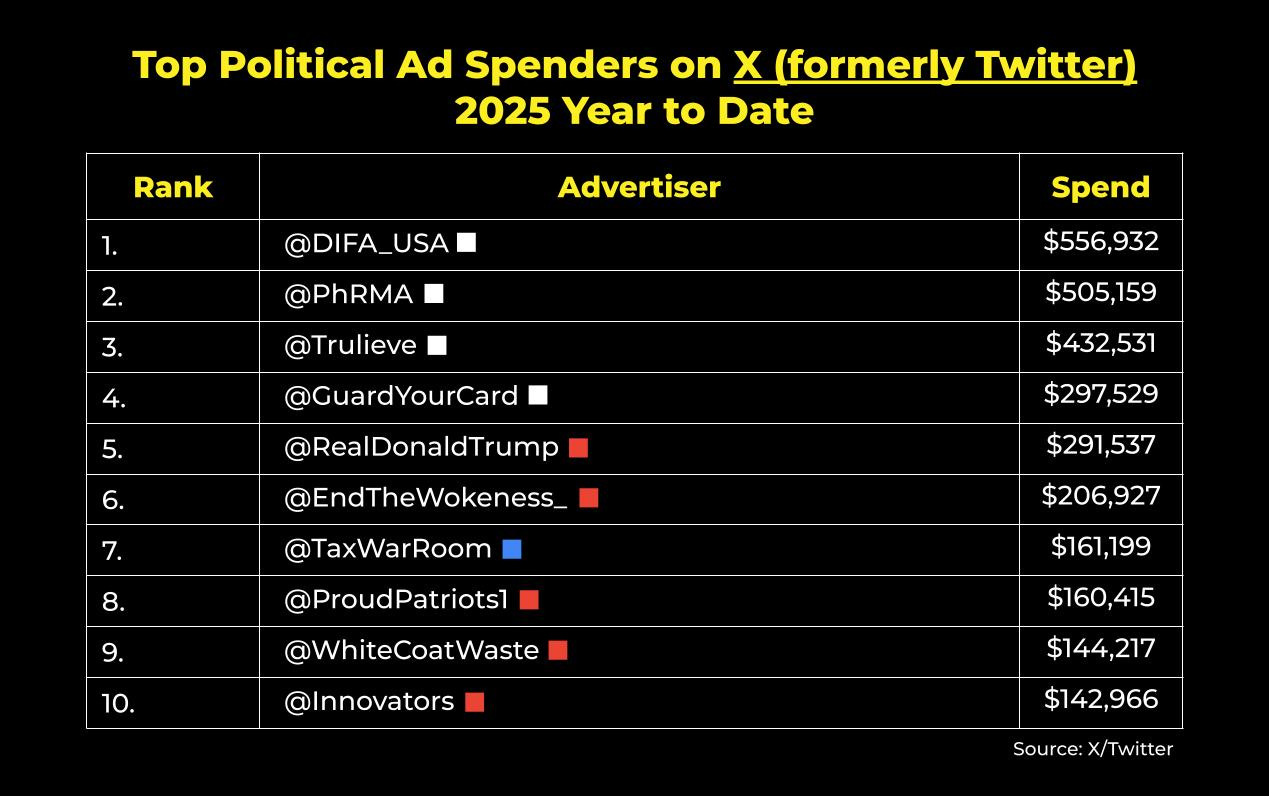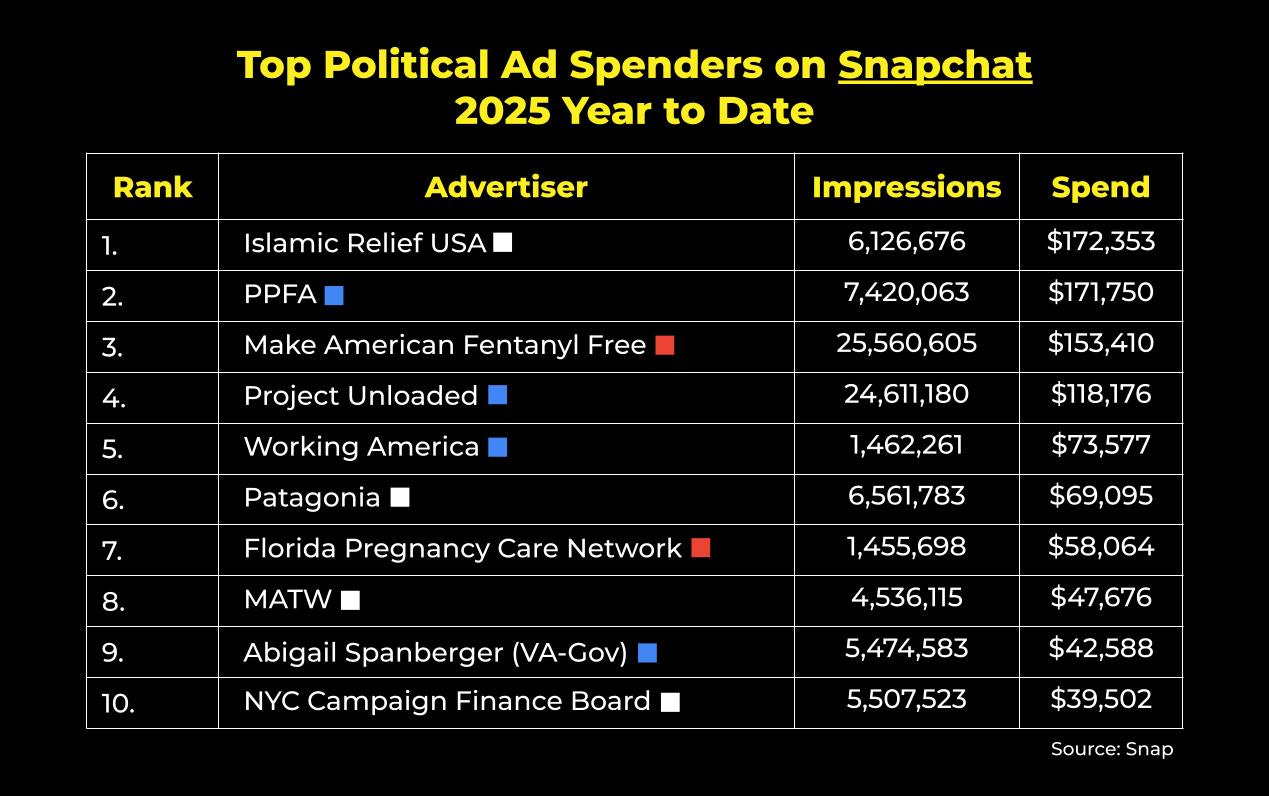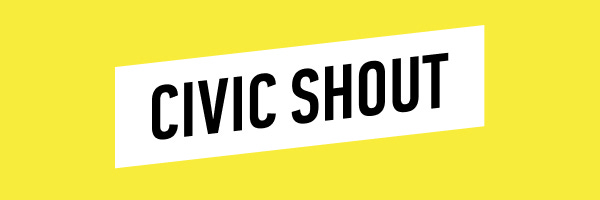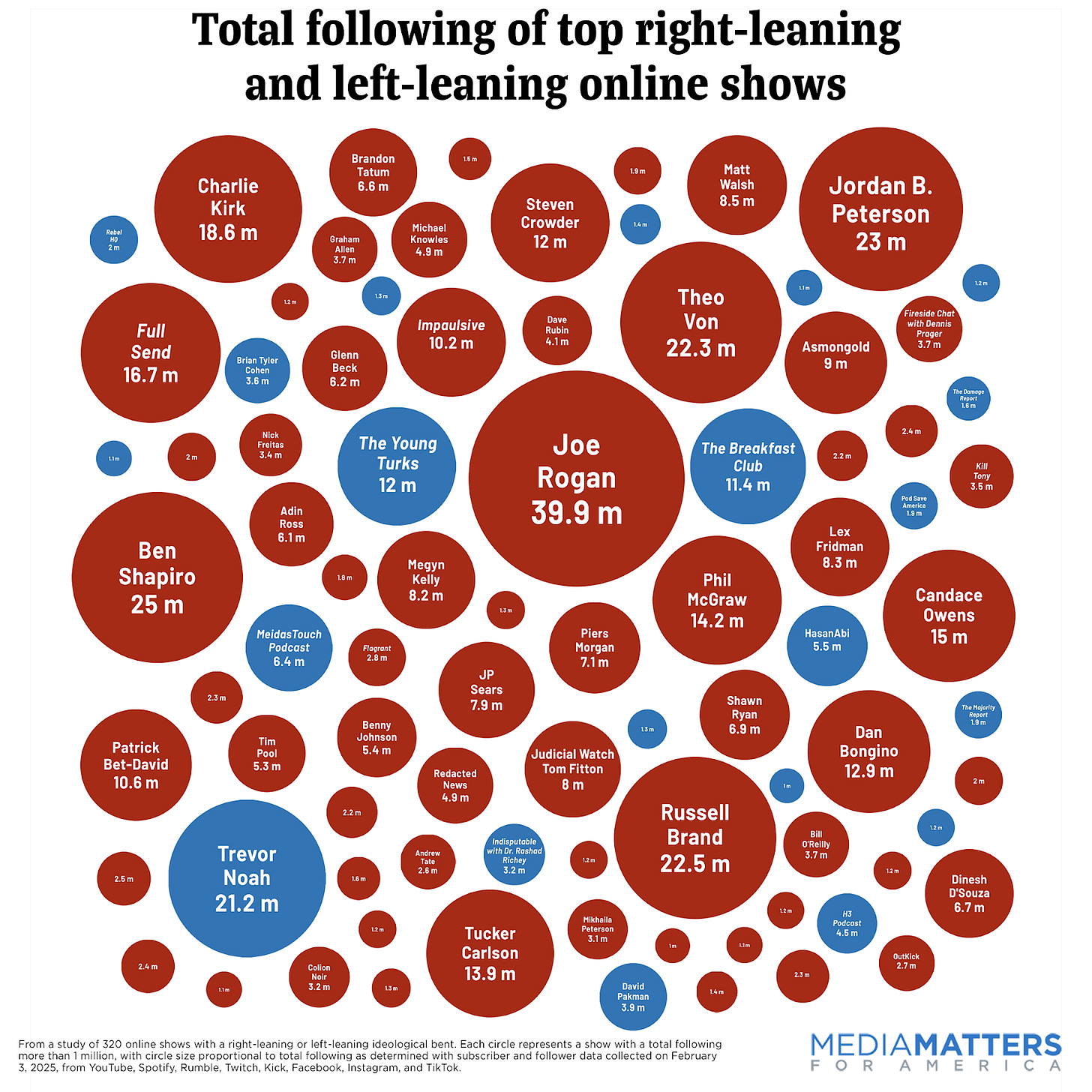Democrats Are Losing YouTube. Here’s How We Fix It.
Also inside: A look at digital ad spend in TX, VA, and NJ, how progressive creators are already proving there's a path forward, and more
This newsletter is sponsored by the donor acquisition approach that helps you turn $1 into $2.
Hi everyone – I’m Ethan Kelly, a long-time FWIW reader, and guest author for today’s edition. I was an intern on the Kamala HQ team last year, and at 14 years old, I founded Let’s Talk Elections, a YouTube channel that built an audience of 200,000+ subscribers and generated over 100 million views — now, I work as a Lead Strategist for Luminary Strategies.
For today’s FWIW, I want to offer my thoughts on the YouTube universe — and why Democrats are losing and what they can do to win.
More on that below, but first…
Digital ad spending, by the numbers:
FWIW, U.S. political advertisers spent about $13.6 million on Facebook and Instagram ads last week. Here were the top ten spenders nationwide:
James Talarico’s Meta ad spend continues to dramatically outpace his Senate primary opponent’s. This week, Colin Allred increased his Facebook and Instagram investments to $11,022 (nearly double what he spent last week)… but that’s still not even 4% of Talarico’s total.
Meanwhile, political advertisers spent just over$5.9 million on Google and YouTube ads last week. These were the top ten spenders nationwide:
With less than 40 days until Election Day, this week’s Google and YouTube advertising was heavily shaped by the two 2025 gubernatorial contests. In Virginia, Abigail Spanberger’s investments came out to more than triple that of her opponent, Winsome Earle-Sears. Meanwhile, New Jersey saw both the DGA and RGA pour six-figure sums into elevating their respective candidates.
On X (formerly Twitter), political advertisers in the U.S. have spent around $7.5 million on ads in 2025. According to X’s political ad disclosure, here are the top spenders year to date:
…and lastly, on Snapchat, political advertisers in the U.S. have spent around $1.6 million on ads in 2025. Here are the top spenders year to date:
Tired of burning money with Care2 or Meta ads?
It’s 2025, and groups like Common Cause, Earthjustice, and Amnesty International are leaning on Civic Shout to acquire ROI-positive donors and activists. See how you can, too.
The New Prime Time
Every night, millions of young Americans turn on their screens to commentators the way past generations tuned into Walter Cronkite. But, unfortunately for Democrats, the content they consume is far from the evening news — it’s a constant stream of right-wing ideology baked into comedy, culture, and casual conversation.
My YouTube channel was the beginning of my journey in electoral politics — and I can tell you firsthand: Democrats are losing the fight for attention on YouTube, and with it, the next generation of voters.
In my high school U.S. Government class, we were taught the basics of different platforms. Radio was for conservatives, TV was for both sides, and social media leaned left. Since then, everything has changed.
According to Nielsen, YouTube has topped the “Media Distributor Gauge” for six straight months — outpacing Disney, Netflix, and every legacy network. YouTube has evolved far beyond its 2010s-era BuzzFeed clips and Vevo music videos. For millions of Americans, YouTube is now their primary source of news.
And the right dominates it.
A recent Media Matters study of 320 online shows found conservatives hold nearly five times the audience of progressives — and on YouTube, they capture nearly 80% of total political-related subscriptions. Nine of the ten biggest shows are conservative, including: Joe Rogan (~20M YouTube subs), Ben Shapiro (7M+), Jordan Peterson (6M+), and the Nelk Boys (8M+).
In terms of attention, the gap is just as stark. At the time of the report’s release, the right captured about 65 billion views to date, while the left trailed behind at 31.5 billion: a 33.5 billion difference when elections are decided by margins of thousands. However, not all hope is lost. While the right maintains their advance, you can already start to see cracks forming in the online ecosystem — but more needs to be done.
And don’t get me wrong — these aren’t just political talk shows. They’re labeled as “comedy,” “sports,” or “society and culture,” but week after week, they feature right-wing speakers from President Trump to Candace Owens, and a vast parade of conservative influencers. Viewers come for entertainment — and leave with a worldview.
Let’s Talk Elections
On Let’s Talk Elections, nearly 76% of my viewers are men under 35. It’s more than a niche — it is the exact demographic Democrats are hemorrhaging. Obviously they’re already consuming political content on YouTube so now, the question isn’t whether they’ll be influenced — it’s who they’ll be influenced by.
Conservatives have mastered the network model: sleek studios, recurring hosts, merch lines, predictable upload schedules. They’ve built an always-on ecosystem — a built in rapid response structure that meets the moment every single time. There’s always a show live, always a clip trending, and, most importantly, always a familiar voice ready to interpret the news.
While Republicans are scripting, recording, and posting, Democrats are stuck in an approvals email chain waiting for a fifth sign-off. By the time our content goes live, the moment has passed. They’ve ripped countless long and short-form videos, shaping the narrative, and we’re playing catch up. And when our content finally goes live, it’s often a recycled TV ad, stump speech, or one-off explainer — content designed for the Obama-era, not the Trump-era algorithm.
Without a modern-day media strategy and the willingness to compete on every battlefield, Democrats are forfeiting far more than a media gap — these are electoral losses in the making.
The Fix Is Obvious — If We’re Willing
The good news is: Democrats don’t have to start from scratch. Progressive creators are already proving the demand exists — The Young Turks, Brian Tyler Cohen, More Perfect Union, and countless independent voices have mastered the platform. The problem isn’t the audience. It’s that Democrats still treat YouTube like a side project instead of the main stage.
But Democrats don’t need to reinvent the wheel. The playbook is here: build recurring shows, elevate recognizable hosts, and invest in the creators who already know how to speak YouTube’s language. Move at the speed of the platform — hours, not days. Show up in the big spaces while also building our own. Because for millions upon millions of voters, YouTube isn’t a distraction. It’s their prime-time news.
Republicans have already built their online Fox News and Democrats face a choice: catch up, or lose for generations to come. The fix isn’t mysterious. Stop uploading like it’s 2016. Start acting like it’s 2026. Because the battle for YouTube is the battle for the future — and right now, we’re losing it.
Tired of burning money with Care2 or Meta ads?
It’s 2025, and groups like Common Cause, Earthjustice, and Amnesty International are leaning on Civic Shout to acquire ROI-positive donors and activists. See how you can, too.
That’s it for FWIW this week. This email was sent to 24,564 readers. If you enjoy reading this newsletter each week, would you mind sharing it on X/Twitter, Threads, or Bluesky? Have a tip, idea, or feedback? Reply directly to this email.



